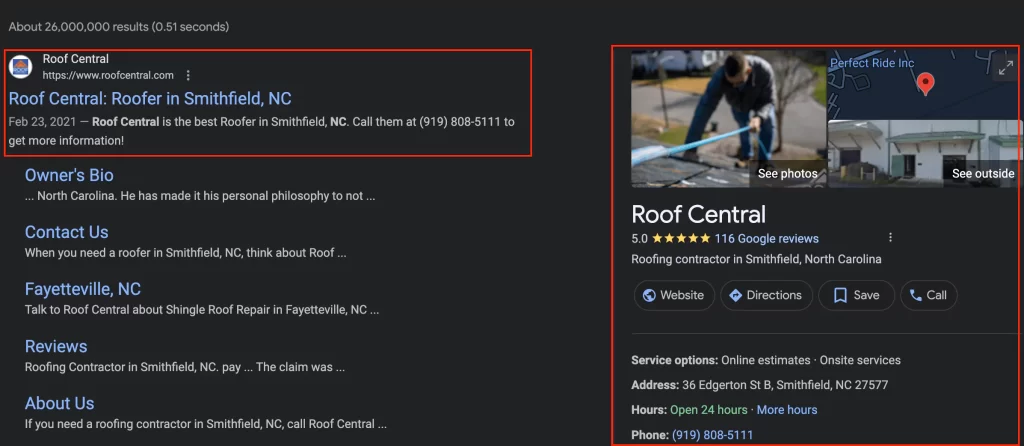Inbound marketing is the most effective way for roofing companies to grow a sustainable business. When prospects intentionally reach out to a roofing provider, they are more likely to convert into sales and become repeat customers.
When customers find your roofing company on a Google search, they feel like they found you compared to cold calling, for example, where you find them.


Inbound Marketing Explained
Inbound marketing is a technique or channel that inspires potential customers to contact your business voluntarily. Examples of inbound marketing include search engine optimization, social media content, and website calls to action.
Customers acquired through inbound marketing channels differ from those sold through outbound techniques. Outbound marketing channels include billboard ads, print ads, radio ads, and even cold calling. These kinds of pushy marketing tactics are far less effective in the modern digital landscape.
Inbound Marketing’s Effectiveness for Roofers
Roofing customers gravitate to inbound marketing for psychological and practical reasons. Today’s consumers are more educated than ever, particularly regarding “tricks” to convince them to choose one service over another.
Word of mouth still exists today, but it travels at the speed of a WiFi connection. Online reviews have replaced word-of-mouth recommendations; now, every consumer can probe your roofing company before making a final decision. This makes inbound marketing even more effective today.
Bonus: 51 Roofing Marketing Ideas Based on 15+ Years in The Industry
Types of Inbound Marketing
The internet presents countless opportunities to market to consumers. A website was once the primary way people connected with roofers online. However, today, that is no longer the case. While websites are still valuable as the central hub of a marketing campaign, they are not the only way to reach prospects.
Any channel roofing companies can use to expand awareness about their services without “pushing” is considered a form of inbound promotion.
Examples of inbound marketing include:
- Check-ins: Photos of recent jobs or “check-ins” created through DataPins
- Content Marketing: Website content distributed on social media and other channels
- SEO: Website pages that rank for keywords on Google and other search engines
- Social Media: Posts and shares that collect engagement on various social platforms
Inbound vs. Outbound Marketing For Roofers
Outbound marketing strategies can still be effective if done correctly, but their rate of return is far worse. Take direct mail, for example. Mailing postcards to homeowners will cost you, and your logo will end up in the nearest trash can.
Think about other forms of outbound marketing that don’t work:
- Cold Calls: Unexpected sales calls offend most small business owners
- Email Spam: Mass email sending and paid email lists often annoy consumers
- Intrusive / Pop-Up Ads: Ads that “pop up” on a website are intrusive and “force” the user to view them
Sometimes, outbound strategies worth pursuing include billboard and radio/TV ads. While they don’t have the same kind of demographic targeting as social media advertising or Google Ads, they still have brand recognition value for larger companies.
Roofers should only do this when they’ve become successful enough in their community to warrant these branding exercises. For most contractors, keeping it simple is the best practice.
Inbound Marketing Consultation
If your business still relies on outdated marketing channels, Roofing Webmasters can help modernize your lead generation process through inbound marketing services. Our agency was founded on the principles of organic customer acquisition with a special focus on search engine optimization and GMB.
You can contact us to schedule a free consultation regarding inbound marketing for your roofing business. During our call, we will outline the specifics of our channels and how they have helped more than a thousand roofing companies succeed online over the past 10+ years.








